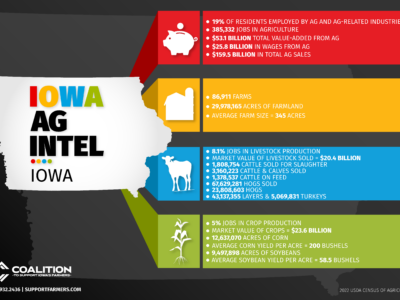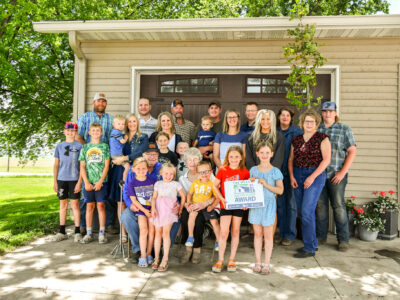Develop an Emergency Action Plan Before the Storm
05-29-2013 in Livestock
Spring has returned to Iowa and with it so has Mother Nature’s fury. She has thrown rain, snow, sleet, strong winds and tornados at us – all within a few months. Natural disasters can happen any time. It’s important that livestock farmers be prepared both before and after the storm.
Farm-specific Emergency Action Plans helps farmers pro-actively make decisions that, in the case of a natural disaster, will help them react in the manner best-suited to protect their farm, livestock and buildings.
The plan may be as simple as a list of contacts and phone numbers for different events, or can be more specialized for individual events that occur in the day-to-day operations of running a farm.
For example, what if the well stops pumping water on a 90 degree day, cattle get out and are on the road at 2:00 a.m., or an employee is in a serious accident? Do you have a plan in place that that says what to do and who to call in each of those situations?
This time of year, it’s important that farmers make preparations for their families, employees, equipment and buildings, and have backup plans for electricity for their barns and other critical farm facilities. Livestock farms should also maintain emergency plans that address power needs and on-site feed capabilities.
Here are some tips for preparing farms for major storms. Obviously, if your farm was in the direct path of a tornado, there may not have been much you could have done to prevent catastrophic damage. However, it is always a good idea to have made preparations and be on the alert once the weather report indicates a storm is brewing. These include:
- Monitor local weather reports for up-to-the-minute information on the storm.
- Check generators to be sure they are in good working order.
- Identify your animals and keep records so you can recover the live ones and document those that didn’t survive for insurance and tax purposes. Ear tags, branding, ear notching, etc. are all recommended methods of identifying livestock.
- Register your premises. Those that have their premises registered typically are in a better position to have recovery efforts begin sooner.
- Make a list of important phone numbers (Emergency Action Plan) in order to make calls following a storm. Phone numbers to include are your veterinarian, neighbors, local emergency management office, insurance agent, fire department, sheriff’s office and employees.
Be sure to share the Emergency Action Plans with family, neighbors and employees and what their roles are. Plans should be posted in locations that are accessible by people needing them in case of emergency.
For more information on developing an Emergency Action Plan, contact the Coalition to Support Iowa’s Farmers at 800-932-2436.
-30-
Recommended News

Robbins Family Hosts Cattle Building Open House
Farmers interested in learning about the benefits of raising cattle under roof are invited to attend an open house at the Robbins family farm to tour Justin and Lacie Robbins...
Read More
NEW STUDY SHOWS IOWA AGRICULTURE EVEN STRONGER
Iowa’s 86,911 family farms continue to be a key driver of Iowa’s economy, contributing 32 percent more to the state economy than in 2017, according to a new study commissioned...
Read More
Farming is a Family Affair
The Streit family of West Bend, Iowa, has cultivated their farm for over three decades, fostering a legacy of hard work and community support. Diane and Tony Streit, alongside their...
Read More